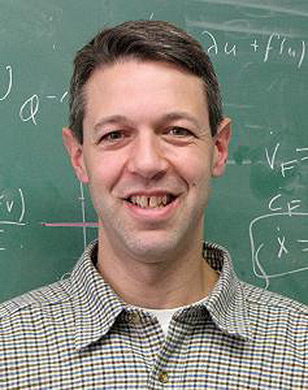 Breathing happens without even thinking about it, but that doesn’t mean it’s simple.
Breathing happens without even thinking about it, but that doesn’t mean it’s simple.
Researchers have debated for years about how a group of brain cells called the preBötzinger complex governs breathing rhythms — and according to a study by two University of Pittsburgh researchers, a new model they’ve created explains many results that other scientists have found about how the process works.
Department of Mathematics Professor and Chair Jonathan Rubin, PhD (pictured), and Postdoctoral Researcher Ryan Phillips, PhD, in the Kenneth P. Dietrich School of Arts and Sciences, published the paper in the journal eLife. Dr. Rubin is an affiliated faculty member of the McGowan Institute for Regenerative Medicine.
To attempt to explain some apparently conflicting experimental results, the researchers started with a model of how specific charged atoms flow in a single brain cell, informed by data from experiments, then scaled up that model to the size of a whole network of cells. The model predicts that the flow of charged calcium atoms could explain patterns that researchers have seen in how brain cells synch up, providing a prediction that researchers can now test in their experiments.
The results, the duo writes, could “unify a wide range of experimental findings” on how brain cells get into rhythm and come to drive the rhythm of our breath.
Read more…
Abstract (Putting the theory into ‘burstlet theory’ with a biophysical model of burstlets and bursts in the respiratory preBötzinger complex. Ryan S Phillips, Jonathan E Rubin. eLife, 2022 Apr 5;11:e75713.)
